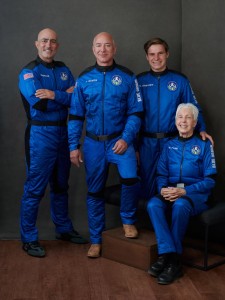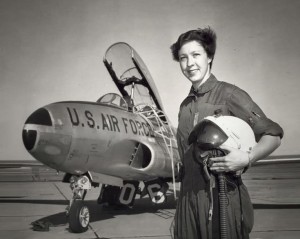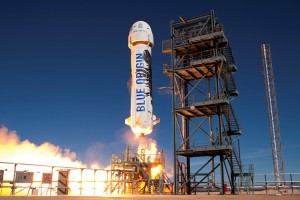Wally Funk Checks Space off her Bucket List
Wednesday, November 17th, 2021After training for 60 years, Wally Funk finally arrived in space this summer. Once a trainee of the First Lady Astronaut Trainees (FLAT’s) program run by a National Aeronautics and Space Administration (NASA) physician back in 1961, Funk passed all the tests and training before the program ended. Although these women, later known as the Mercury 13, were not permitted to become astronauts, Funk never forgot her dream of going to space. She had a distinguished career as a pilot, logging thousands of miles or kilometers in the air and teaching thousands of other pilots, not staying on the ground for too long.
On July 20, 2021, Funk flew on the New Shepard rocket built by the company Blue Origin, founded by American businessman Jeff Bezos. She rode with Jeff Bezos, Bezos’s brother Mark, and 18-year-old physics student Oliver Daemen. The rocket rose more than 100 miles (61 kilometers) straight into the air to the boundary of space. The booster separated from the capsule and landed using its engines. The capsule floated back down to the ground on parachutes. The whole flight lasted about 10 minutes.

The American businessman Jeff Bezos poses with the other passengers on the first crewed flight into space of Blue Origin’s craft New Shepard: (left to right) Mark Bezos, American executive; Jeff Bezos, founder of Blue Origin; Oliver Daemen, Dutch student; and Wally Funk, American aviation pioneer.
© Blue Origin
At age 82, Funk was at that time the oldest person to travel to space. She surpassed the American astronaut and senator John Glenn, who returned to space in 1998 at the age of 77 aboard the space shuttle. Wally Funk held the record for 85 days. Since then, Candian-born actor William Shatner, 90, traveled to space on Blue Origin’s second suborbital flight on October 13, 2021, claiming the record.
Mary Wallace Funk was born Feb. 1, 1939, in Las Vegas, New Mexico, near Santa Fe. She began her first flying lessons at the age of nine. Funk graduated first in her flying class at Stephens College in Columbia, Missouri, and earned her pilot’s license in 1958. Funk earned her Bachelor of Science degree in secondary education from Oklahoma State University. There, she joined the school aviation team, the Flying Aggies. In 1960, at the age of 21, she was named a flight instructor at Fort Sill in Oklahoma, becoming the first woman flight instructor at a U.S. military base.
After the FLAT’s program ended, Funk continued her career as a pilot and flight instructor. She became the first woman inspector with the Federal Aviation Administration (FAA) in 1971. In 1974, she became the first woman air safety investigator for the National Transportation Safety Board, investigating plane crashes. NASA began accepting women as astronauts in 1978, and Funk applied four times to the agency for astronaut training. She was denied, despite her experience, because she did not have an engineering degree. Undeterred, Funk pursued opportunities for private space travel, purchasing a ticket for a future suborbital flight with space tourism company Virgin Galactic. Earlier this year, Bezos surprised Funk with a seat on Blue Origin’s inaugural crewed flight, fulfilling Funk’s lifelong dream.




